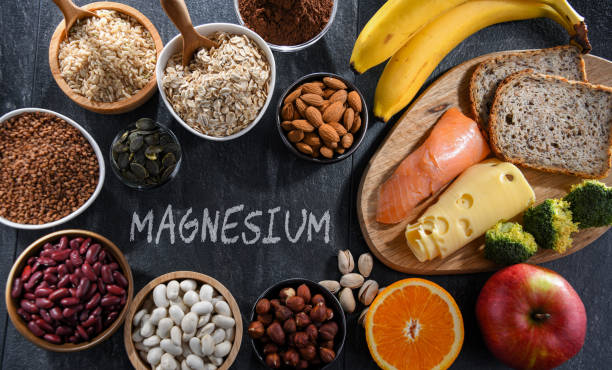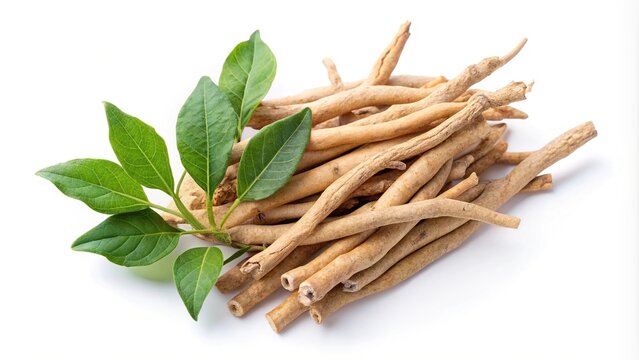Why these supplements — short primer
Deep restorative sleep (slow-wave sleep, NREM stages 3–4) is the period when the body prioritizes repair: consolidating memory, clearing metabolic waste from the brain's glymphatic system, restoring cellular energy, and balancing hormones. Lifestyle is the foundation (consistent schedule, daylight, exercise, caffeine timing). The supplements below are tools people use to lower nighttime hyperarousal, support calming neurotransmitters (GABA, adenosine), reduce evening inflammation and stress, and create a predictable bedtime ritual that cues the brain for sleep.
1) Magnolia Bark — calm the alarm, help fall & stay asleep

What it does (simple)
Magnolia bark has a long folk-medicine history for easing anxiety and promoting sleep. Modern studies and user reports point to two core effects: it quiets the nervous system (so thoughts don't race at night) and it deepens non-REM sleep phases that support physical recovery. Unlike prescription sedatives, many find it produces calming relaxation without heavy morning grogginess when used at sensible doses.
How it helps deep sleep
- GABAergic support: honokiol interacts with GABAA receptor subunits to reduce arousal and support the transition into deep, slow-wave sleep.
- Adenosine & sleep pressure: magnolia compounds help strengthen biochemical sleep pressure signals so you fall asleep more readily.
- Anti-inflammatory effects: reduces cytokines and HPA-axis overactivity that fragment sleep.
Practical dosing & routine
| Start | 150 mg standardized extract 30–60 minutes before bedtime |
| Range | 150–400 mg/day (evening most common) |
| Tip | Take with a small fat-containing snack for better absorption (yogurt, nut butter) |
How it usually feels
Users often describe a warm, unwinding sensation that makes it easier to let go of tension and drift into sleep. Middle-of-the-night awakenings may decrease and morning alertness is typically preserved at moderate doses.
Safety notes
- Avoid combining with strong sedatives (benzodiazepines) without medical oversight — magnolia can amplify sedation.
- Not advised in pregnancy or breastfeeding; check with your clinician if you take anticoagulants or have planned surgery.
- Start with a low dose to test sensitivity.
Short overview video
2) Magnesium Glycinate — muscle relaxer & sleep promoter

What magnesium does (plain)
Magnesium is required for hundreds of enzymatic reactions including ATP synthesis (your cell's energy currency) and regulation of electrical activity in neurons. Low magnesium often shows up as restless nights, leg cramps, nighttime tension, or waking unrefreshed. Restoring magnesium levels reduces neuronal hyperactivity and helps the body settle into deep restorative sleep.
How it supports deep sleep
- Calms electrical firing: stabilizes ion channels in neurons so they don't over-fire during the night.
- Boosts GABA tone: indirectly increases inhibitory signaling that helps initiate and maintain slow-wave sleep.
- Mitochondrial recovery: supports ATP production for cellular repair that occurs during deep sleep.
Practical dosing & tips
| Start | 200–300 mg magnesium glycinate in the evening (with dinner or 30–60 min before bed) |
| Typical | 300–400 mg nightly (adjust to tolerance) |
| Note | High doses of some forms (oxide) cause loose stools; glycinate and threonate are gentler |
How people notice it
Improvements commonly include easier sleep onset, fewer nighttime leg cramps, less restlessness, and waking more refreshed. If you had a deficiency, mood and cognitive clarity can improve across days to weeks.
Safety
- High doses may cause GI upset. If you have kidney disease, consult a clinician first.
- If you're on certain blood pressure medications or antibiotics, check for interactions.
Short video
3) Shoden® Ashwagandha — adaptogen that eases stress and improves sleep depth

What ashwagandha does (simple)
Ashwagandha is an adaptogen — it helps your body dampen the stress response. By lowering evening cortisol and promoting calmer nervous system signaling, it reduces the mental and physiological “tension” that keeps people awake or in light, fragmented sleep. Over weeks it also supports resilience, which helps normalize sleep architecture.
How it supports deep sleep
- Reduces cortisol: lower hormones that interfere with night-time downregulation.
- Enhances inhibitory tone: supports GABA-like pathways and serotonin balance to quiet the mind.
- Neuroprotective support: antioxidant actions help long-term sleep architecture by protecting neurons from chronic stress damage.
Dosing & practical use
| Start | 250 mg standardized extract (Shoden® or similar) once daily — evening or split AM + early PM |
| Common | 300–600 mg/day (often split; some take a small evening dose for sleep) |
| Tip | Start lower if sensitive; allow 1–3 weeks to assess full effect on sleep continuity |
How it typically feels & safety
People report calmer evenings, easier sleep onset, and better morning energy with continued use. Avoid in pregnancy; check interactions with thyroid meds, immunosuppressants, sedatives, and blood sugar or blood pressure meds. Rare reports of liver injury exist when preexisting liver disease is present — consult your clinician if you have liver concerns.
Short video
4) Chamomile Extract — gentle night-time relaxant and ritual cue

What chamomile does (simple)
Chamomile is one of the gentlest and most widely used calming herbs. A warm chamomile tea or a measured extract helps create a reliable bedtime ritual while its compounds subtly reduce anxiety and muscle tension, making sleep onset smoother and reducing micro-arousals that interrupt deep sleep.
How it supports deep sleep
- GABA modulation: apigenin acts at GABA receptors for light sedation and reduced restlessness.
- Digestive soothing: eases mild tummy discomfort that can fragment sleep.
- Ritual benefits: the calm bedtime routine (warm drink, dim light) helps cue circadian physiology for sleep.
Dosing & practical tips
| Start | Chamomile tea (1 cup) or 200–400 mg chamomile extract 30–60 minutes before bed |
| Common | 200–800 mg extract depending on formulation |
| Tip | Use as part of a screen-free wind-down routine for maximum benefit |
Safety
Generally well tolerated; avoid if you have severe ragweed/pollen allergies. Chamomile can have mild anticoagulant effects — check with your clinician if you take blood thinners.
Short video
5) Blue Lotus (Nymphaea caerulea) — mild sedative & dreamy sleep aid

What blue lotus does (plain)
Blue lotus has a long ceremonial and herbal use for relaxation and sleep. It's not a heavy sedative — instead it eases tension and promotes a dreamy, relaxed state that some people find helps with falling asleep and experiencing richer REM phases. Use cautiously and test low doses at first.
How it supports deep sleep
- Mild CNS calming: alkaloids reduce arousal without heavy cognitive suppression.
- Dream enhancement (anecdotally): some users report more vivid, memorable dreams — this is highly individual.
- Ritual & dose control: a small tea or tincture as part of your wind-down can be helpful for cueing sleepiness.
Dosing & precautions
| Common | Blue lotus tea or 50–150 mg extract at night (start very low) |
| Tip | Avoid combining with prescription sedatives or alcohol; test response in a safe sleep window |
Safety
Clinical research is limited. Many tolerate low doses well; avoid during pregnancy, breastfeeding, and when using strong sedatives or opioids. If in doubt, check with a clinician.
Short video
Simple 4-Week Plan to Test Sleep Supplements
- Week 0 (baseline): track bed & wake times, time to fall asleep, awakenings, and overall sleep quality (1–10) for 7 nights.
- Week 1: try one supplement at the low starting dose (e.g., magnesium glycinate 200–300 mg at night). Keep routine consistent (no new stimulants or big schedule changes).
- Week 2: continue the same supplement, evaluate logs; if improved and tolerated, keep the dose. If no effect or side effects, stop and return to baseline week.
- Week 3: optionally add a second gentle tool (chamomile tea or low-dose blue lotus) while keeping the first consistent.
- Week 4: refine: keep what helps, drop what doesn’t. If sleep remains poor despite careful trials, pursue professional evaluation (CBT-I, sleep clinic, or medical consult).
Important: avoid combining multiple sedating herbs at once — it makes it impossible to know which helped and increases risk of next-day drowsiness.
Safety checklist before you start
- Talk to your prescriber if you take blood thinners, antidepressants, benzodiazepines, opioids, or other prescription meds.
- Start low and increase slowly — more is not always better for sleep herbs.
- Avoid mixing multiple strong sedatives and alcohol.
- If you are pregnant, breastfeeding, or have severe liver/kidney disease, consult your clinician first.
- Prefer products with clear ingredient labels, batch testing (COAs), and transparent suppliers.
FAQ — quick answers
Which two should I try first?
For many people: Magnesium glycinate (evening) + Chamomile (bedtime ritual) is a gentle, low-risk starting pair. Magnolia or Shoden ashwagandha are stronger options when anxiety or elevated cortisol is the main barrier.
How fast will I notice changes?
Chamomile or magnesium can help within a few days. Magnolia and ashwagandha may take 3–14 days to show reliable improvements. Blue lotus effects are often subtle and vary by person.
Will these make me groggy in the morning?
Proper dosing minimizes next-day drowsiness. Start low, test on nights you can sleep in, and avoid adding new sedatives right before early wake times.
Resources & next steps
- Keep a simple sleep diary for each trial and compare to your baseline week (time to bed, sleep latency, awakenings, overall quality).
- Combine supplements with sleep hygiene: consistent schedule, bright morning light, dim evening light, no screens 60–90 minutes before bed, and avoid late caffeine.
- If insomnia persists (difficulty falling or staying asleep >3 months), consider CBT-I or a sleep specialist evaluation.